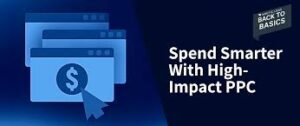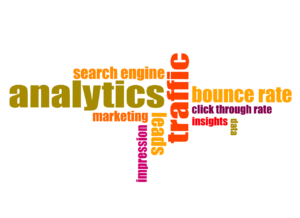One reason many online businesses fail is they have poor domains. However, you’ve done some research and found one you really like, and you believe it’s a good fit for your company. However, are you sure you are not attempting to buy a bad domain? Understanding the concept of a “good domain” will save you time and money – whether you are building a site for yourself, your business, or buying domains for investment.

In fact, Bad domains can be disguised as premium or high-value domains. And, if a domain does not have high potential or is a scam, it can waste your time and money.
In this article, I’ll explain how to know you are about to buy a bad domain.
What really is a bad domain?
When you take your physical business online, you want to make sure you will not waste your resources by choosing a domain name that is harmful to your website. A bad domain is any website with a bad reputation. A bad domain is a website that sells counterfeit goods, such as counterfeit designer clothes or drugs. These sites are usually shut down by authorities because they’re breaking the law and harming consumers by selling unsafe products at inflated prices.
A bad domain is a domain that has been registered for a specific purpose. These domains are typically purchased, or even created, to mislead search engines and visitors. A bad domain isn’t necessarily one that’s broken or poorly designed though.
A bad domain typically mimics the branding of a legitimate company or website. They may be used to trick users into believing they are on the real website and steal their information, such as passwords and credit card details.

Generally, a bad domain is a domain that has already had any of the following happen to it:
- Google or another search engine has penalized it.
- It was banned for violating a policy, such as copyright infringement or spammy behavior.
- It’s a parked website (a website where you don’t really do anything except make money from ads).
- It is one that has been registered but has never been used.
How to Know You are about to Buy a Bad Domain
How do you know you are about to buy a bad domain name. Here are 5 ways to know a scam before you buy a bad domain name.
1. You are about to buy a bad domain if it has zero results in Google’s index
In most cases, bad domains have no results in Google’s index. To see if a domain is indexed, type it into Google and see if the results are from your site.
If you search for the website’s name and get no results, this is a huge red flag. It means that the domain isn’t being used by anyone else and hasn’t been registered in years. This is bad news because it means you have a low chance of ranking high on Google when people search for your brand name.

However, if it is a new domain, you may want to snatch it up immediately, so you can begin an SEO campaign from scratch.
2. You are about to buy a bad domain if you can’t find the domain owner’s email address or contact info
If you can’t find a way to contact the domain’s owner, it means you have no way of verifying that the person you’re dealing with is who they claim to be. This is especially important when purchasing domains from a third party online.

Always request contact information and ensure that it matches what is available on WHOIS records for the domain name. If not, contact them via Facebook or LinkedIn to confirm their identity before purchasing anything from them.
3. You are about to buy a bad domain if it contains unrecognizable domain extension
If you see a domain with an unrecognizable extension, such as .biz or .info, that is a bad sign. Those are generic top-level domains (gTLDs) and should not be used for anything serious. The top-level domain (TLD) is the last part of the URL after the last period. TLDs include .com, .net, .org, .info and others.
The most common TLDs are .com and .net. However, there are also many unrecognizable TLDs that can make it difficult for visitors or search engines to find your website. Some examples of these types of domains include: mywebsite.biz.
4. You are about to buy a bad domain if the domain suffers from SEO penalties
A penalty is a Google algorithm designed to detect websites that attempt to game the system.
One of the most important things to understand is that if the domain suffers from SEO penalties, you are about to purchase a bad domain. It is not just one thing that makes a domain bad; it is a combination of factors. The first thing you should do is type “site:” into Google. This will display all of your site’s listings.

These penalties are the result of SEO spammers who create sites with keyword-rich content and backlinks in order to rank for specific search terms. SEO penalties can be temporary or permanent, and they can have an impact on your website’s rankings or even bring it down entirely.
5. You are about to buy a bad domain if the domain name has a lot of words and hard to pronounce
A bad domain name is one that appears to have been made up on the spot, has incorrect spelling, or is simply unappealing.
- There are too many words –
You’ve probably heard the phrase “keep it short and simple.” This also applies to domain names. If your domain name contains too many words or is too long, it will be less appealing to potential buyers. It also makes it more difficult for people to remember. Furthermore, if you want a word with multiple meanings, consider including more descriptive words so that buyers can easily understand what your website is about.
- Hard to pronounce –
Avoid choosing a domain name that is difficult to pronounce or spell correctly, as this will make it difficult for your ideal client to remember and may discourage them from purchasing from you in the future. For example, if someone cannot remember your website address or how to spell it correctly, they will most likely abandon their purchase or go elsewhere.
Conclusion
It is critical to check for quality before purchasing a domain name.
If you’re purchasing a website address from a registrar like GoDaddy or Namecheap, you can usually check the quality of a domain before purchasing it by clicking on “WHOIS” in the site’s left-hand column. You’ll see when and who registered the website name, as well as contact information and related domains.
You should also check sites like WhoIs and DomainTools’ to see if there have been any reports of problems with the domain name.






